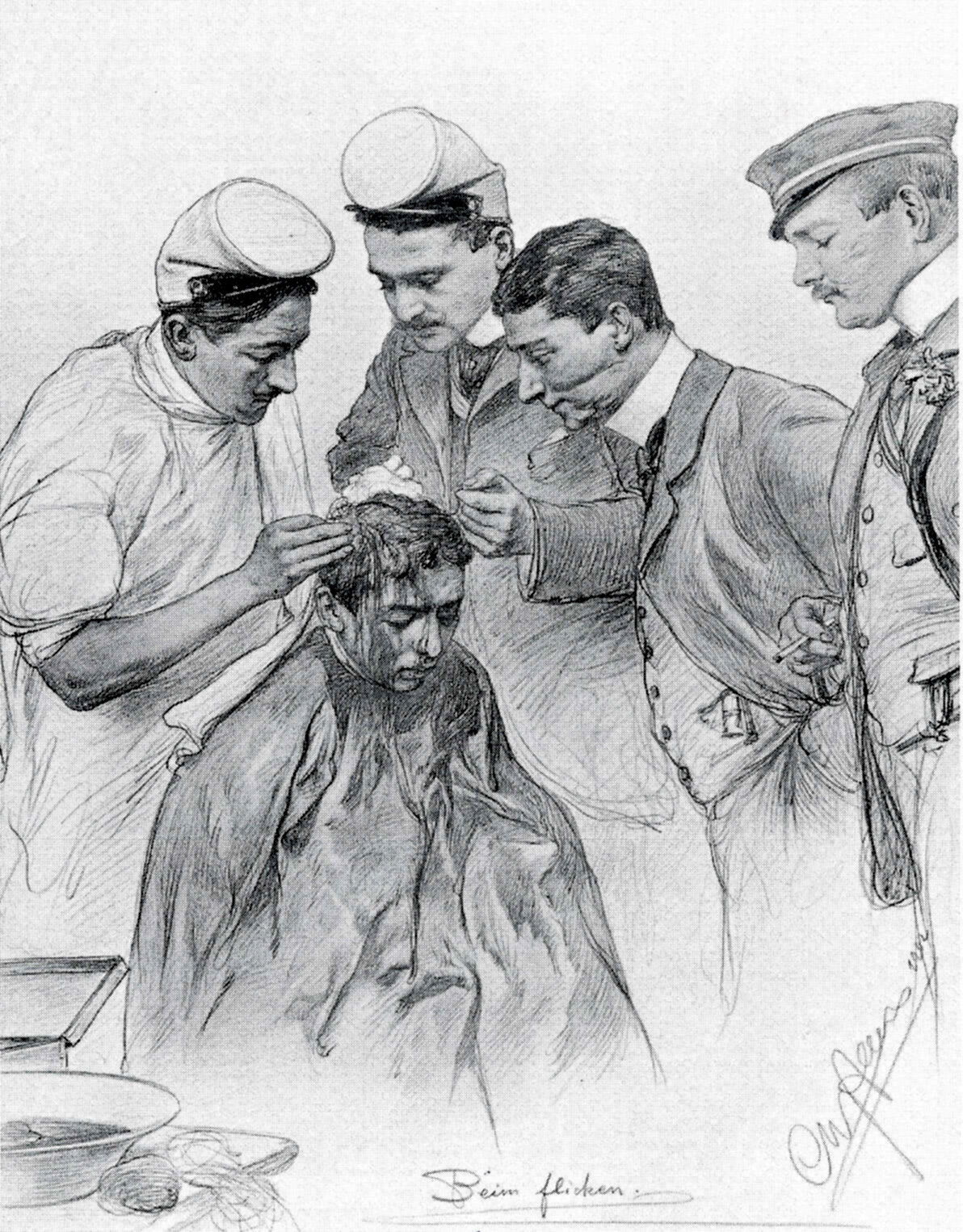Keep 'Em In Stitches

One of the real disappointments of having a Heal skill in most games is that it lets us be lazy.
One of the real disappointments of having a Heal skill in most games is that it lets us be lazy. Compare a skill like Heal to, say, Diplomacy or Intimidate. In most games that I've played in, and every game that I run, the Diplomacy and Intimidate skills require a little role-playing. Woe betide the poor player in one of my games who makes a Diplomacy check without actually giving me a speech, or at least, an example of the things they're saying. Depending on who the player is, if they can't give me some actual snappy dialogue to go with their check, then I might go so far as to make it an automatic failure, and at the very least, the player's check will take a penalty. In contrast, when someone makes a Heal check, I've never actually seen a storyteller demand that the player briefly explain some of the actions involved. I once ran a one-shot D&D game where all of the players were physicians; none of them had ever played D&D before, but all of them had experience in the operating room and/or the emergency department. Even then, for whatever reason, I didn't ask them to describe their Heal checks at all, and it didn't occur to them to do so, even though, without me instructing them, they simply assumed that they needed to tell me some of the details what they were doing to intimidate their prisoners if they wanted it to work. I've seen storytellers insist that players describe how they're hiding, what sort of performances they're putting on, and even how they were searching a room, but I've never seen someone asked to describe how they were healing another creature. In part, we don't ask for it because our players won't know the answer, but it's in part because, whereas a good Diplomacy or Intimidate check will have the whole gaming group laughing uproariously, the description of a Heal check would be tedious.
A big part of healing, you see, is stitching people up, and stitching people up is boring.
As most gamers will tell you, broadly speaking, it's more fun to take something apart then put it back together again. When you're taking something apart, you get to look at all the little bits, see how they fit together, and figure out how it works. Depending on what, precisely, you're taking apart, there's often a bit of creative freedom and there's rarely a right or wrong way. Putting things back together is often less fun, even though it can often be much more educational. The trouble is that when you're putting something back together, it usually has to go back together in a certain way. If you're reassembling a computer, for example, then it really does matter that you put the screws in the right spot and tighten them a certain minimum amount. If you're building a bookcase, it usually doesn't look quite right if you put all the shelves in upside down, and if you're reassembling a car, it's usually not a good idea to have some unidentified parts left over. In much the same way, putting a person back together is both time-consuming as complex, because missing even a small step can have irritating consequences. Consider the abdomen, which is the part of the body most commonly the site of surgery. If you ever have the chance to observe an appendectomy or a Caesarean section, you'll see that the procedure itself can be incredibly fast -- during my long-ago two months of training in obstetrics, there was an obstetrician who could remove a baby from a mother in under a minute -- but the act of closing the abdomen up again afterwards is the really time consuming part. The abdominal wall consists of a series of several layers, including skin, muscle, and multiple forms of connective tissue, and contrary to how it's depicted in certain movies that I could mention, closing up a wound (surgical or otherwise) requires that most of these layers be sutured up individually, one at a time, and possibly with different types of sutures. This is particularly true if you expect your patient to need to be back on their feet and active within a few days, which may be the case with both young mothers and adventurers. Needless to say, all of this suturing takes a lot of time, often longer than the entire rest of the surgical procedure, and at teaching hospitals the task often goes to medical students and junior residents simply because the staff surgeons find it too boring.
The reason this is relevant is because a lot of the Heal checks in an ordinary role-playing game probably represents suturing. To my knowledge, nobody has ever collected data on this, but it's my (anecdotal) experience that PCs hit point loss tends to come from sharp objects more than anything else. The majority of these wounds, at least in a fantasy setting, tend to get healed magically -- which presumably knits all the various layers together with supreme efficiency -- but a lot of the Heal checks that we see ought, by all rights, to involve stitching wounds closed. It's time consuming and boring, and arguably among the most important first aid skills one can have.
I still wouldn't recommend telling your players to describe their stitching, unless you want to be the one who needs a trip to the emergency department.
More than four years ago, Dr. Eris Lis, M.D., began writing a series of brilliant and informative posts on RPGs through the eyes of a medical professional, and this is the one that appeared here on November 2, 2013. Lis is a physician, gamer, and author of the Skirmisher Publishing LLC OGL sourcebook Insults & Injuries, which is also available for the Pathfinder RPG system.






